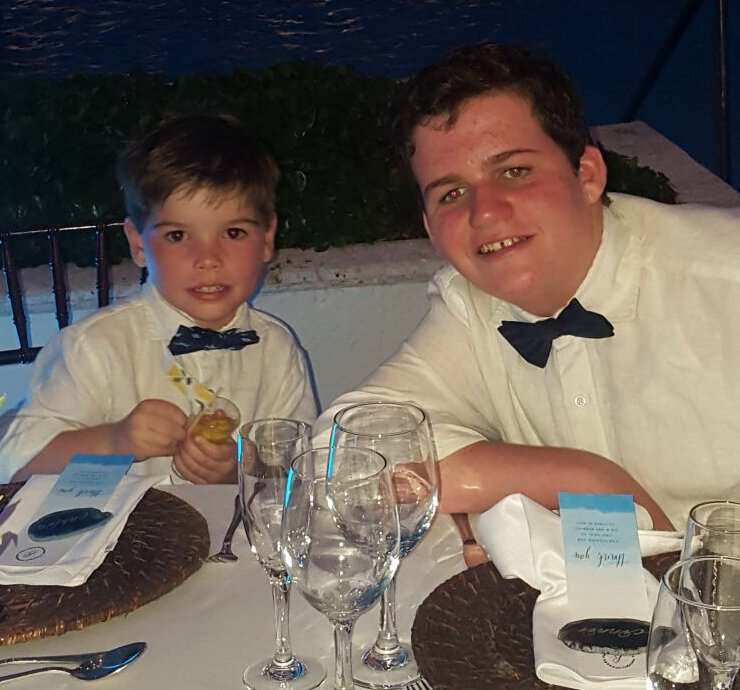CONNOR (RIGHT) IS THE LATEST RECIPIENT OF A HANDHELD BLOOD ANALYZER TO HELP MANAGE COMPLICATED DIABETES INSIPIDUS AS A RESULT OF A HYPOTHALAMIC HAMARTOMA.
Connor, now 17 years old, was born with a rare type of brain tumor called hypothalamic hamartoma (HH) . Connor experienced gelastic seizures (a symptom of HH) from birth. Gelastic seizures are rare and involve episodes of nervous laughter with no apparent trigger. The seizures were never diagnosed until he began having complex partial seizures.
After being admitted to the hospital at seven years old, they found out that Connor had a large brain tumor deep in his brain. They were told it was inoperable. After an EEG was performed on Connor, they discovered that he was having continuous seizures even when he didn’t present any type of seizure activity that you could see.
According to Connor’s mom, Lisa, “Not much information was given to us, there didn’t seem to be much success with medication, and surgery we were told was too risky.”
After discharge, the family searched the web for some information on this terrible disease and found hope for hypothalamic hamartoma. There was indeed one doctor in the United States that had experience with the removal of this type of rare brain tumor. After much red tape from insurance, the family traveled from New Jersey to Arizona to meet with Dr. Rekate at the Barrow Neurological Institute in Phoenix, Arizona.
Dr. Rekate performed an eight hour surgery, removing about 80 percent of the tumor. Connor was in the hospital for three weeks in Arizona recovering and spent the fourth week in Arizona as an outpatient. Connor was released to come home to New Jersey seizure free!
It seemed as if we were given our boy back,“ said Lisa. “He was still developmentally delayed, but the staring, the anger and seizures associated with HH seemed to be gone.”
They were advised that Diabetes Insipidus (DI) was a possibility, but he was not showing any signs for four weeks post surgery and everyone felt pretty confident that he didn’t need to worry about DI. About ten days after arriving home, Connor showed signs of DI and was admitted to the hospital with a sodium of 179. A normal sodium range is 135 – 145.
Connor was very, very ill, and stayed in the PICU for 3 weeks, and one week on the pediatric floor. Connor’s DI has been very difficult to manage. His sodium is high when clinically it should be low, sodium is low when it should be high, the endocrinologists at Children’s Hospital of Philadelphia do not know why his DI presents this way.
Connor does not have his thirst intact so his caregivers monitor all of his fluid inputs and outputs. Even with measuring his fluids, he has been hospitalized many times with his sodium varying from 126 to 176.
“The ability to use a handheld blood analyzer machine at home, to monitor his sodium when symptoms begin would be such a great help in managing his DI and will hopefully keep him healthy and out of the hospital,” said Lisa. “Thank you for listening to his story, and for helping us obtain this machine.”
Connor was the beneficiary of the handheld blood analyzer as a result of your support on Giving Tuesday. Consider a monthly donation to continue helping kids like Connor.



